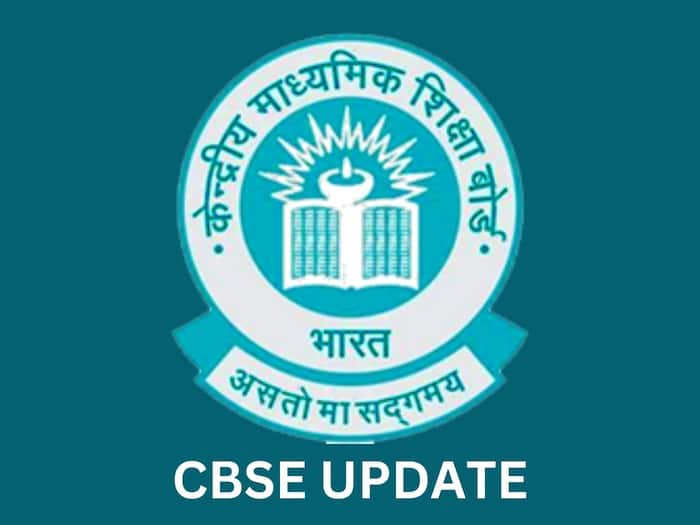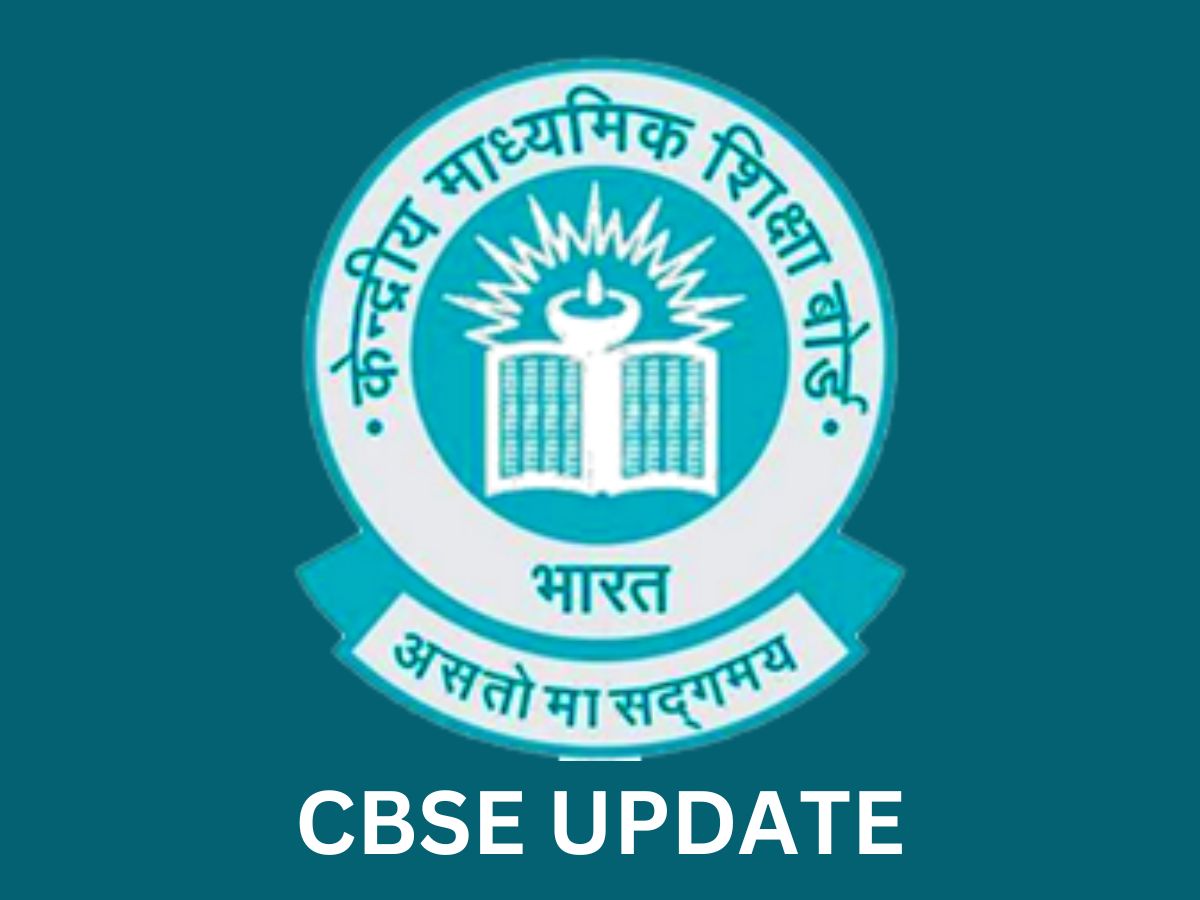The Central Board of Secondary Education (CBSE) is expected to release the detailed subject-wise datesheet for the Secondary School Examination (Class X) and Senior School Certificate Theory Examination (Class XII) soon.

CBSE Date Sheet 2024: The Central Board of Secondary Education (CBSE) is expected to release the detailed subject-wise datesheet for the Secondary School Examination (Class X) and Senior School Certificate Theory Examination (Class XII) soon. Going by the media reports, it is suggested that the CBSE Class 10th and Class 12th Board Exam Datesheet for the academic session 2023-24 is likely to be released in the first week of December 2023. It’s important to note that, as of now, no official statement has been issued by the CBSE Exam Controller, Sanyam Bhardwaj.
As the CBSE 12th-class exam approaches, the quest for achieving high marks becomes a priority for many students. Physics can be challenging, but with the right strategies and a focused approach, you can navigate the complexities of the subject and secure good marks. To score well in the Physics examination, a student needs a strategic approach, which he/she must follow during this preparatory leave. Here are a few tips from the expert Anil Ahlawat, CEO of MTG Learning Media.
CBSE Physics Board Exam 2024: Quick Tips, Important Topics to score high marks
The Class 12 Physics syllabus is divided into major 9 units with each unit containing one or more chapters. The maximum weightage is carried by the chapters which are Electric Charges and Fields, Alternating Current, Ray Optics and Optical Instruments, Wave Optics, Semiconductor Electronics: Materials, Devices and Simple Circuits.
Here are some of the valuable tips that will help you score high marks in your class 12th physics exam 2024.
- Begin your preparation by focusing on chapters with higher marks weightage. Foundational topics like Electrostatics and Electromagnetic Induction set the stage for a comprehensive understanding of Physics.
- Dedicate substantial time to practicing numerical problems, particularly in challenging areas like Optics and Electromagnetism. Understand the step-by-step process behind each numerical to enhance problem-solving skills.
- Memorize derivations as they often carry marks. Additionally, focus on creating clear and labeled diagrams, crucial for conveying complex concepts effectively, especially in topics like Ray Optics and Electromagnetic Waves.
- Students must practice image formation in optical instruments, these are frequently asked. Practice the questions related to prism.
- The NCERT textbook is your go-to resource. Master it thoroughly, explaining each concept in your own words. Board exam questions often align closely with the textbook content.
- Familiarize yourself with the exam pattern and question types by solving sample papers. This practice refines time management skills and fine-tunes your overall exam strategy.
- Simplify complex concepts through concept mapping. Visual aids like flowcharts break down information into digestible pieces, enhancing comprehension and serving as effective study tools.
Commit to regular revision for long-term memory retention. Summarize each chapter in your own words, creating a condensed version for quick revisits. This habit solidifies your knowledge and ensures readiness for intricate topics.
Chapter-wise important topics for CBSE class 12th Physics exam
Electric charges and fields
- Important topics are Coulomb’s Law, Electric Field, Electric Flux, Gauss’s Law, Applications of Gauss’s Law.
- Questions related to above mentioned topics are frequently asked in the examination.
- Maximum questions like Very Short Answer (VSA), Short Answer (SA) and Long Answer (LA) were asked from topic Applications of Gauss’s Law in the last 10 years.
- For the last 10 years “Applications of Gauss’s Law” contains the highest weightage.
- Numerical and formula-based questions are often used to ask in the examination from topics Gauss’s Law and Coulomb’s Law.
Alternating current
- AC Voltage applied to a capacitor, AC Voltage Applied to a Series LCRCircuit, Transformer are highly scoring topics in the examination.
- Maximum weightage and Maximum MCQ, SA-I & II type questions were asked from the topic AC Voltage Applied to a Series LCR circuit in the last 10 years.
- Numerical questions are frequently asked from the same topic in the examination.
Ray optics and optical instruments
- Refraction at spherical surfaces and by lenses, refraction through a prism, and optical instruments are the most important topics of this chapter.
- Maximum MCQ, VSA, SA, and type questions were asked from topics Refraction at spherical surfaces in the last 10 years.
- Formula-based questions are frequently asked in the examinations from the topic “lens and mirror formula.
Wave optics
- Maximum weightage in the last 10 years is of long answer type questions from the topic diffraction.
- In the last 10 years, maximum very short answer type questions were asked from topic interference of light waves and Young’s Experiment.
- Maximum numerical based questions frequently asked from topic YDSE in the examination.
- Maximum questions on the concept of Wavefront and Huygens principle were also asked in the examination.
Semiconductor electronics: materials, devices, and simple circuit
- Maximum weightage is of topic Semiconductor Diode.
- Maximum long answer type questions were asked from topic “Applications of junction diode as rectifier in last 10 years.
- Also, SA II and LA type questions were asked from topic Semiconductor Diode in the last 10 years.
- For the board examination, question based on energy bands, p – n junction, I_Vcharacteristics of diode are also important.
Important formulas to remember for the exam-
Coulomb’s Law:
If two-point charges q1 and q2 are separated by a distance r in vacuum, the magnitude of the force (F) between them is given by where e0 is called the permittivity of free space.
e0 = 8.854 × 10–12 C2 N–1 m–2 and
Gauss’s Law:
According to Gauss’s law, total flux over a closed surface S in vacuum is times the total charge enclosed by closed surface S.
Ohm’s Law:
The potential difference V between the ends of a conductor is applied and steady current I is produced in it. Then Ohm’s law states that VµI or V = RI where the constant of proportionality R is called the resistance of the conductor. The resistance R depends on the materials of conductor and its dimensions.
Kirchhoff’s Rules:
Junction rule: The sum of the magnitudes of the current directed into a junction equals the sum of the magnitudes of the current directed out of the junction. This is based on conservation of charge.
From the given figure,
I1 – I2 – I3 – I4 + I5 = 0
I1 + I5 = I2 + I3 + I4
Loop rule: Around any closed-circuit loop, the sum of the potential drops equals the sum of the potential rises. This is based on the conservation of energy.
From the figure, –V1 – V2 + V3 – V4 = 0.
Boxes may contain resistor or battery or any other element (linear or nonlinear).
Magnetic Field, Lorentz Force:
The force observed by Lorentz in electric and magnetic field on a moving charge is given by
Biot-Savart Law:
In vector form, , so the direction of is perpendicular to the plane containing and
Faraday’s Law and Lenz’s Law:
According to Faraday’s law, the induced emf is directly proportional to the rate of change of flux through the coil.
. The polarity of induced emf is given by Lenz’s Law.
If the coil has N turns then net induced emf is given by,
Lenz’s law states that the induced current in a circuit always flows in such a direction that it opposes the changes in magnetic flux linked with circuit or the very cause that has produced it.
Mirror and lens formula:
Mirror formula, where u is the distance of object from pole, v is the distance of image from pole and f is the focal length.
Interference of Light Waves:
Resultant intensity, Where Intensity of 1st wave, I2 = Intensity of 2nd wave, f = phase difference between the sources
Einstein’s Photoelectric Equation:
At threshold frequency u0, the energy of photon hu0 of incident radiation is just sufficient enough to liberate the electron i.e., just equal to work function W0.
Important tips for the exam day –
- Before the examination, take a few minutes to review the key formulas and fundamental concepts. This quick revision can help reinforce your understanding and boost your confidence in tackling different types of questions.
- Attempt the paper in different rounds. This strategy involves breaking down the exam paper into distinct rounds of attempted questions. Instead of moving through the paper sequentially, consider approaching it in stages.
- Begin your exam by tackling the questions you feel most confident about. This could include topics you’ve thoroughly prepared, concepts you find straightforward, or questions that align with your strengths.
- As you progress through the paper, if you encounter questions that you are unsure about or need more time to solve, mark them for revisiting later. After completing the first round of attempting questions, go back to the marked questions in the subsequent rounds.
- Throughout the entire process, be mindful of the time available. Efficiently managing your time ensures that you allocate sufficient attention to each round and have the opportunity to address all sections of the paper.
- Reserve some time at the end of the exam for a quick revision. Use this time to go through your answers, ensuring you haven’t missed any questions or made calculation errors.
- Keep a calm and focused mindset throughout the exam. If you come across a difficult question, take a deep breath, and approach it with a clear head. Panicking can hinder your ability to think clearly.
It’s advisable to regularly check the CBSE official website (cbse.gov.in or cbse.nic.in) for updates and the release of the upcoming board exam datesheets for classes 10 and 12.

